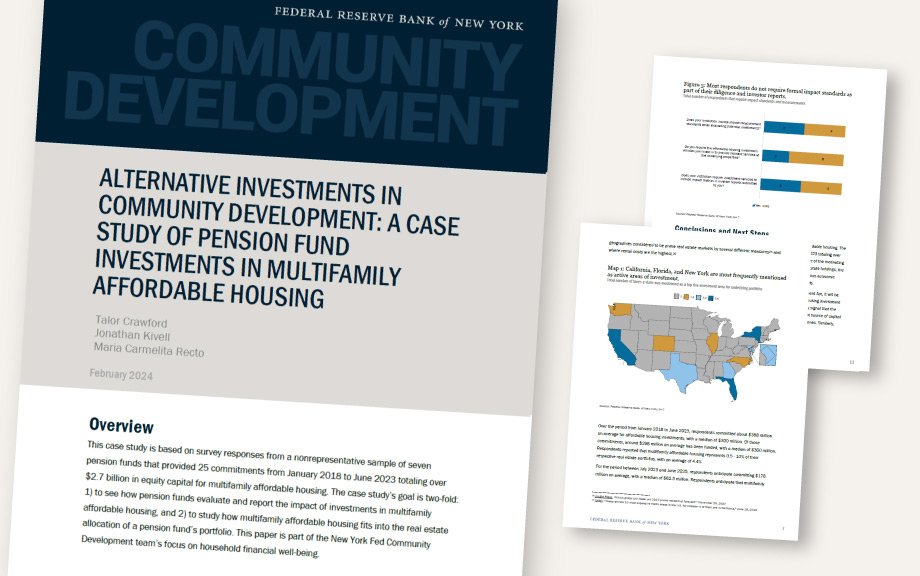
Demand for affordable housing far outstrips supply. The New York Fed’s Community Development team is studying institutional investments in affordable apartments to understand how private capital investments may affect rents. Its latest publication on the topic, “Alternative Investments in Community Development: A Case Study of Pension Fund Investments in Multifamily Affordable Housing,” examines pension fund investments in affordable rentals.
The case study is based on a non-representative sample of seven pension funds. The funds surveyed made commitments totaling over $2.7 billion for investments in affordable apartments during a five-and-a-half-year period ending June 2023.
The case study found 91% of respondents’ committed capital for affordable apartments went to closed-end investment funds rather than open-end funds. Unlike open-end funds that remain under the same ownership without an end date, closed-end funds have a defined time horizon, typically ten years, before the properties in their portfolios are sold again. This means the type of investment fund used has implications for the future affordability of a property, since affordability could change under a new investor.
“Because demand for affordable apartments outstrips the current supply, we are studying private investments in affordable housing, including investments by pension funds,” said Jonathan Kivell, director of community investments at the New York Fed. “A growing number of affordable apartments may be at risk of higher rents as affordability restrictions expire. We’re seeing affordable housing developers, owners, and investors creatively leverage public subsidies to keep rents affordable for low- and moderate-income individuals and families.”
The case study also found:
- For the period from January 2018 to June 2023, respondents committed an average of about $388 million for affordable housing investments.
- For the two-year period ending in June 2025, respondents anticipate committing $178 million, on average, for affordable housing investments.
- Respondents said affordable apartments represent about 4.4% of their real estate portfolios, on average. Respondents anticipate that proportion will be roughly the same for the next two years.
The case study, based on survey responses collected between July and December 2023, is the second in a series focused on investments in affordable housing. The first, “Alternative Investments in Community Development: A Case Study of Managers of Multifamily Affordable Housing Private Investment Vehicles,” focused on how investment managers source and deploy capital for affordable apartments. That case study found that more than two-thirds of equity capital raised by investment manager respondents was from nonbank institutional investors, including pension funds.
“There’s a lack of data about private capital investments in affordable housing,” Kivell said. “Our goal is to begin to fill in that gap.”

